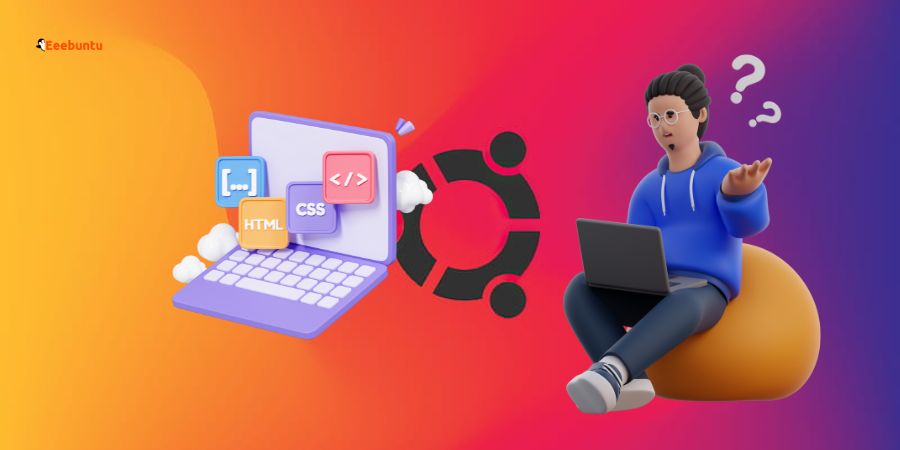Key Takeaways: Although the Linux distros mentioned below can be a great fit to match developers’ needs, the right distro for you ultimately comes down to your personal preferences and workflow.
If you’re planning to switch to Linux as a developer in 2024, you’re in for a treat. But with plenty of options available, choosing the right distro can be a daunting task.
But don’t worry because we have brought this list of the best Linux distros for developers to help you find the perfect match for your coding endeavors.
So, here we go –
Ubuntu
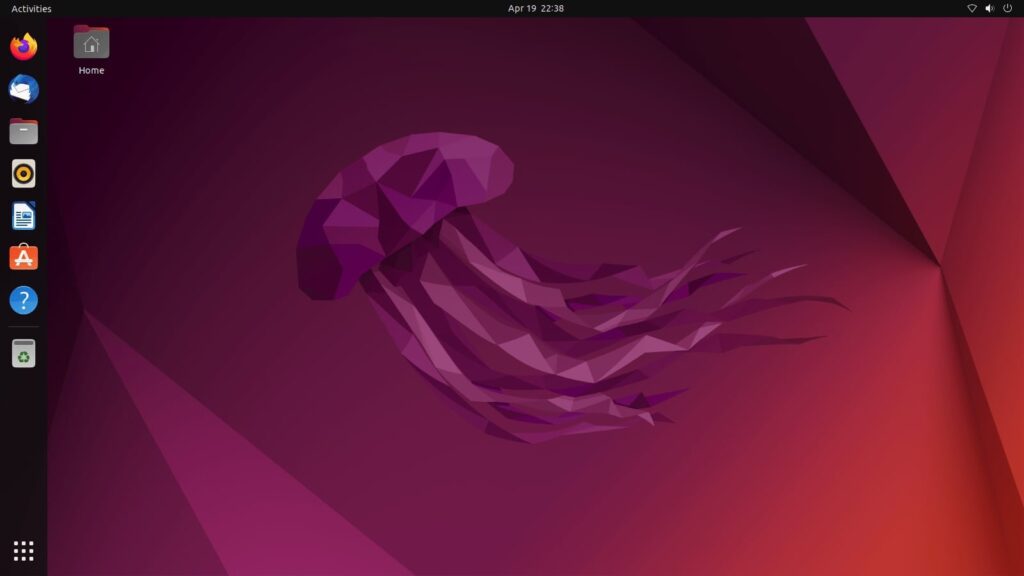
Ubuntu has long been a favorite among developers for its user-friendly interface and extensive package ecosystem. It’s tailored towards both beginners and seasoned developers alike, offering a robust platform for building, testing, and deploying applications.
Besides, if you are not sure about replacing your current OS with Ubuntu, you can install Ubuntu on VirtualBox for the moment and replace it with your current OS once you get comfortable. You can read our detailed Ubuntu review to learn whether you should go with this distro.
Key Features
- Snap Package Manager: Ubuntu’s Snap package manager simplifies software installation and updates, ensuring you always have access to the latest tools and libraries.
- Long-Term Support (LTS) Releases: With LTS releases, you can count on Ubuntu for stability and security updates as it is one of the most stable Linux distros out there, allowing you to focus on your projects without worrying about compatibility issues.
- Ubuntu Developer Tools Center: This handy toolkit provides easy access to essential development tools, including compilers, debuggers, and IDEs, streamlining your workflow.
- Ubuntu Pro: Canonical is offering free access to Ubuntu Pro, which gives you 10-year security coverage for free.
| Pros | Cons |
|---|---|
| Seamless integration with popular developer tools | Can be resource-intensive on older hardware |
| Active community support and documentation | Limited customization compared to some other distros |
| Regular security updates and patches |
Manjaro
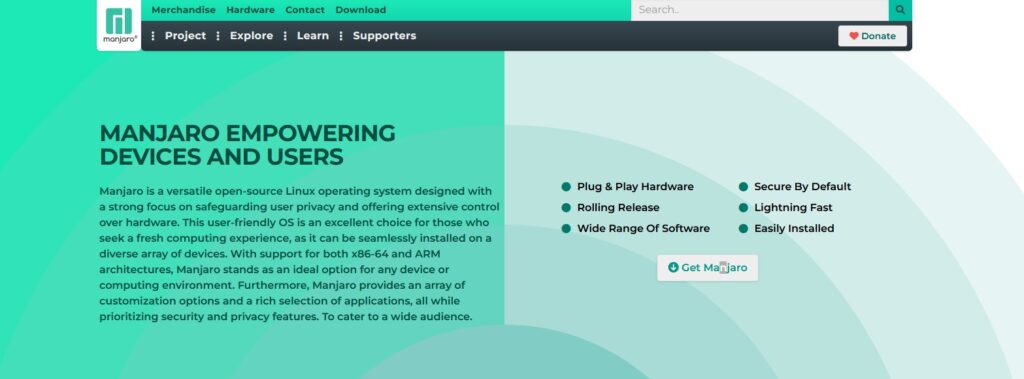
Now, if you’re the adventurous type who likes to live life on the edge, Manjaro might be more your speed.
Manjaro is a rolling-release distribution known for its simplicity and versatility. It’s designed to enhance your development experience with a minimalistic approach, allowing you to focus on what matters most: writing code.
Key Features
- Arch-based: Manjaro inherits the power and flexibility of Arch Linux while providing a more user-friendly installation process and pre-configured desktop environments.
- Pamac Package Manager: Pamac offers a graphical interface for managing packages, making software installation and updates a breeze.
- Arch User Repository (AUR) Support: Gain access to a vast repository of community-maintained packages, allowing you to install software not available in official repositories easily.
| Pros | Cons |
|---|---|
| Rolling-release model ensures you always have access to the latest software versions | Occasional stability issues due to the rolling-release nature |
| Lightweight and fast performance | Less hand-holding for beginners compared to more user-friendly distros |
| Extensive customization options |
Arch Linux

If you’re the tinkering type who loves to get your hands dirty, Arch Linux is your playground.
Arch Linux is a minimalist distribution favored by experienced users who seek more than just a pre-configured environment. It’s designed for users who want complete control over their system, allowing them to tailor it to their specific needs.
Key Features
- The Arch Way: Arch Linux adheres to the “Arch Way” philosophy, emphasizing simplicity, transparency, and user-centric design principles.
- Arch User Repository (AUR): The AUR grants access to a vast collection of community-contributed packages, expanding the software available beyond the official repositories.
- Rolling-Release Model: Arch follows a rolling-release model, meaning you receive continuous updates and access to the latest software versions without the need for periodic upgrades.
| Pros | Cons |
|---|---|
| Unparalleled level of customization and control | Steep learning curve, especially for beginners |
| Lightweight and minimalistic design | Requires manual intervention for system maintenance and troubleshooting |
| Extensive documentation and active community support |
Fedora Workstation

Next on our list is Fedora Workstation.
Fedora Workstation is a cutting-edge Linux distribution sponsored by Red Hat, tailored towards developers and system administrators. It combines the latest software with a focus on stability and security, making it an ideal choice for professional environments.
Whether you’re coding, designing, or just browsing the web, Fedora Workstation is an ideal choice for everything.
Key Features
- GNOME Desktop Environment: Fedora Workstation comes with the GNOME desktop environment, offering a modern and intuitive user interface.
- Flatpak Integration: Flatpak support allows you to easily install and manage sandboxed applications, enhancing security and simplifying software distribution.
- Developer-Friendly Tools: Fedora includes a wide range of development tools out of the box, including compilers, interpreters, and IDEs, to streamline your workflow.
| Pros | Cons |
|---|---|
| Strong emphasis on security and stability | Relatively short support lifecycle compared to Ubuntu LTS releases |
| Regular updates with the latest software releases | Limited availability of third-party software compared to Ubuntu or Debian |
| Integration with Red Hat ecosystem for enterprise support options |
openSUSE
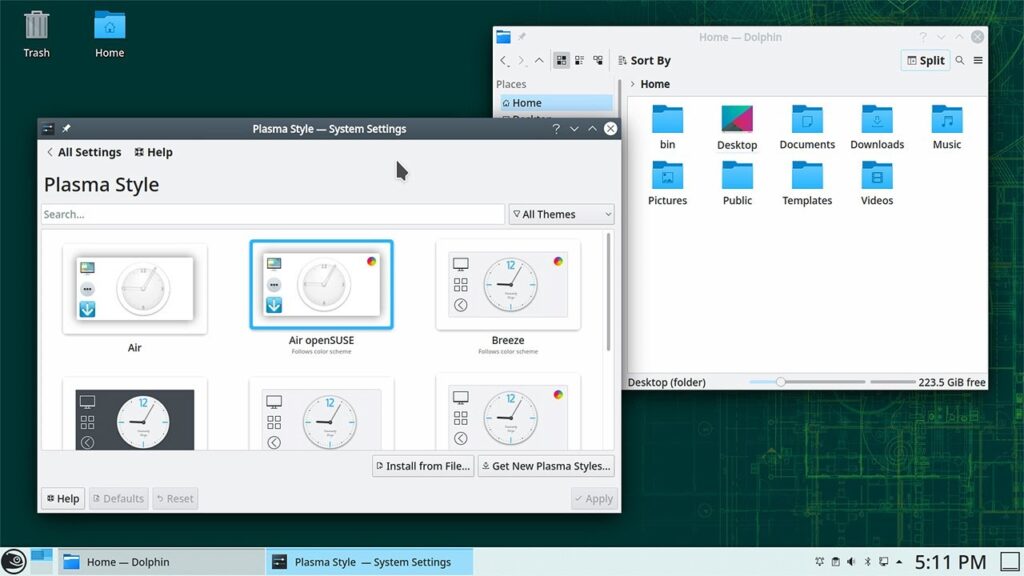
For those who value stability above all else, openSUSE is the way to go.
It is a community-driven Linux distribution known for its stability, flexibility, and robust package management system. Whether you’re a developer, sysadmin, or enthusiast, openSUSE offers a versatile platform for your computing needs.
Key Features
- YaST Control Center: openSUSE’s YaST (Yet another Setup Tool) provides a centralized interface for system configuration and management, simplifying administrative tasks.
- Zypper Package Manager: Zypper offers a powerful command-line interface for package management, with support for resolving dependencies and handling repository management.
- openSUSE Build Service: The openSUSE Build Service allows developers to build packages for multiple distributions and architectures, fostering collaboration and innovation within the community.
| Pros | Cons |
|---|---|
| Stable and reliable performance | Less mainstream adoption |
| Flexible installation options, including desktop environments and system configurations | Limited availability of third-party software |
| Active community and comprehensive documentation |
Debian
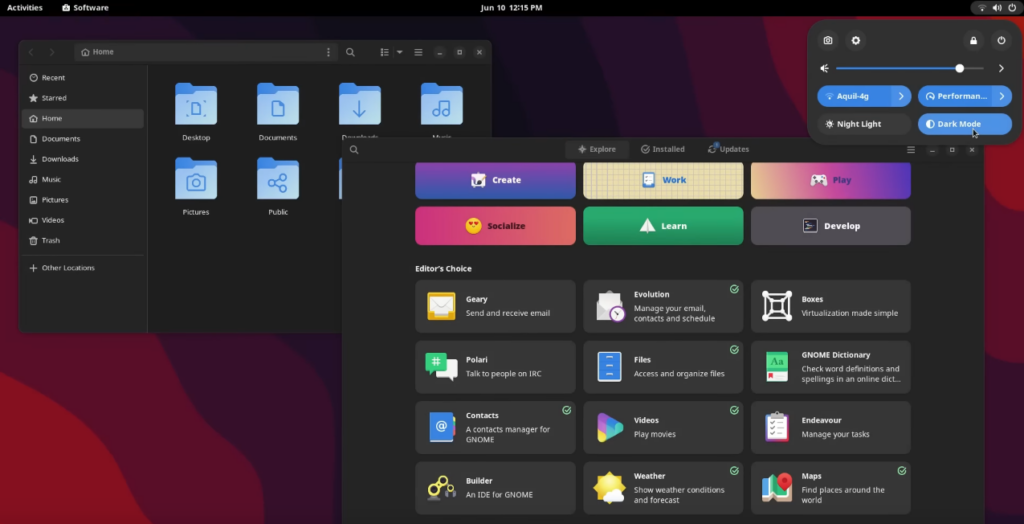
Now, if you’re a purist who values tradition above all else, Debian is your best bet. It’s like the wise old sage of the Linux world, steeped in history and wisdom.
Debian is one of the oldest and most respected Linux distributions, known for its stability, reliability, and commitment to free and open-source software principles. It serves as the foundation for many other distributions, including Ubuntu and its derivatives.
Key features
- Stable Release Cycle: Debian follows a conservative release cycle, focusing on stability and security over bleeding-edge features, making it suitable for production environments.
- Debian Package Management: Debian’s package management system provides a vast repository of software packages, ensuring you have access to a wide range of applications and libraries.
- Debian Social Contract: Debian’s commitment to free software and ethical principles underpins its development philosophy, fostering a vibrant and inclusive community.
| Pros | Cons |
|---|---|
| Rock-solid stability and reliability | Longer release cycles |
| Wide range of supported hardware architectures | Less emphasis on user-friendliness |
| Extensive selection of software packages |
CentOS Stream
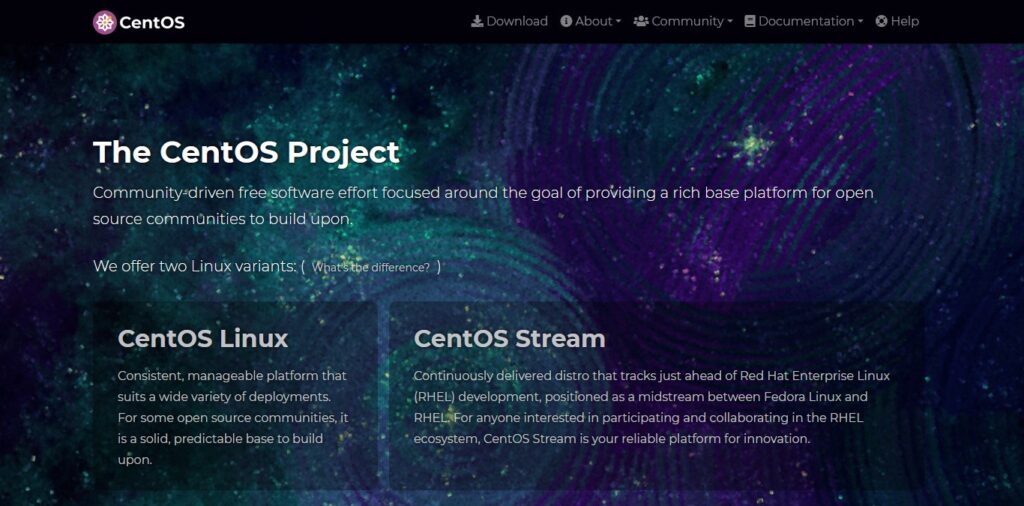
Last but not least, we have CentOS Stream on our list.
CentOS Stream is a rolling-release Linux distribution derived from the upstream development of Red Hat Enterprise Linux (RHEL). It serves as a bridge between Fedora and RHEL, offering a stable yet up-to-date platform for developers and system administrators.
Key Features
- Continuous Delivery Model: CentOS Stream boasts a rolling-release model, providing developers with access to the latest features and updates from the RHEL development process.
- Developer Toolset: CentOS Stream includes a comprehensive set of developer tools and libraries, empowering developers to build and deploy applications with ease.
- Integration with Red Hat Ecosystem: As a downstream distribution of RHEL, CentOS Stream offers seamless compatibility with Red Hat’s enterprise solutions, making it an excellent choice for organizations seeking enterprise-grade support.
| Pros | Cons |
|---|---|
| Close alignment with RHEL for compatibility and support | Limited third-party software availability |
| Regular updates with the latest software packages | Requires familiarity with Red Hat ecosystem |
| Strong community support and documentation |
Conclusion
With so many options, choosing the right one for developers is really a task. From the easy-to-hop Ubuntu to the minimalist charm of Manjaro and the daunting depths of Arch Linux, each distro has its own pros and cons.
Personally, I started with Ubuntu and then shifted to the complexities of Arch Linux.
Along the way, I learned that the best distro isn’t just about technical specs—it’s about finding a companion that resonates with your style and aspirations.
With that said, here I am wrapping up this article. If you have any questions, feel free to shoot them in the comment section below. We will try to respond to your queries ASAP.
FAQs
Which Linux distro is best for beginners?
Ubuntu is a great choice for beginners due to its user-friendly interface and extensive package ecosystem.
Which Linux distro offers the most customization options?
Arch Linux provides unparalleled customization options, allowing you to tailor their system to your specific needs.
Which Linux distro is recommended for stability and security?
Debian is renowned for its rock-solid stability and commitment to security, making it an excellent choice for production environments.

